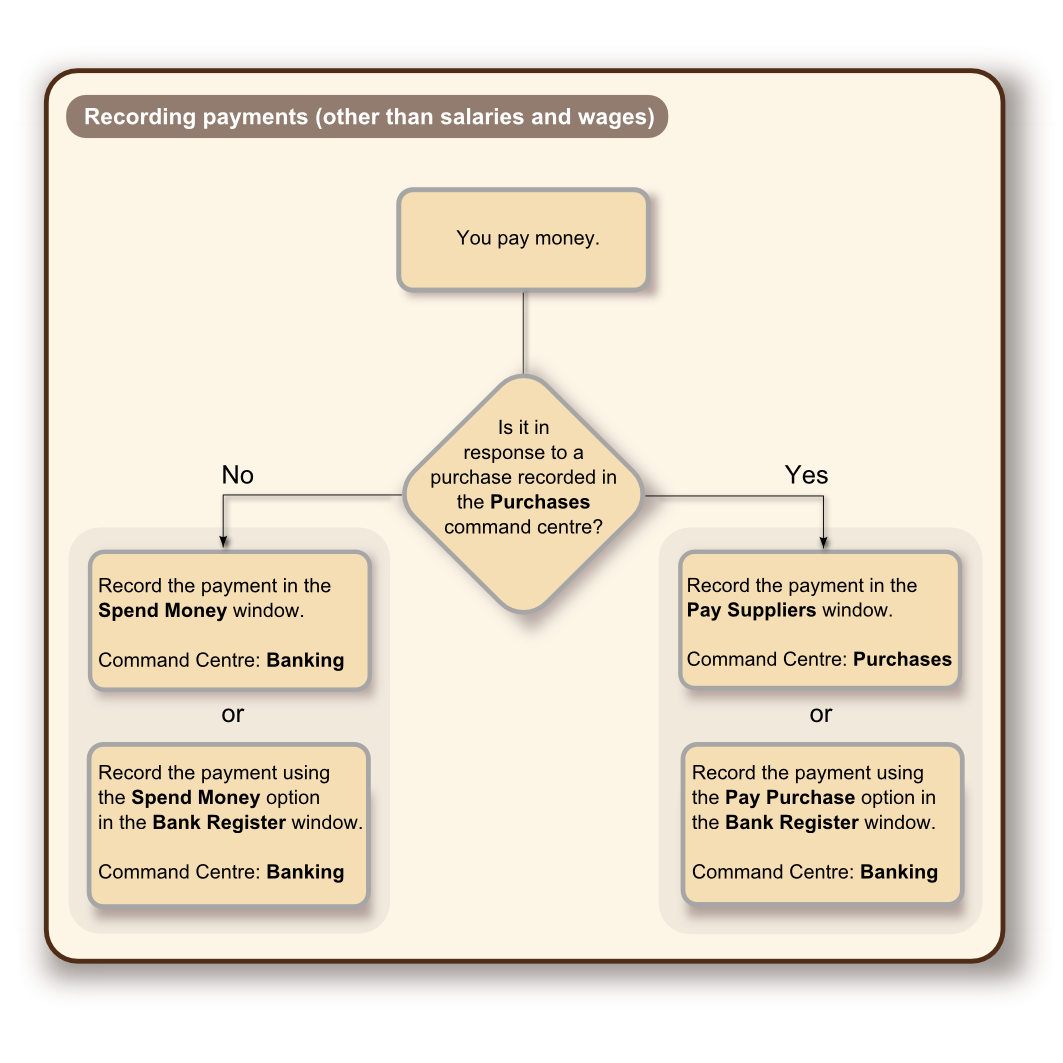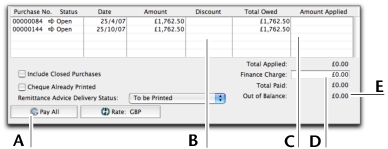If you have recorded a purchase, you pay the supplier in the Pay Suppliers window. In this window you can record the payments to one or more of your outstanding purchases.
You can also make payments to suppliers in the Bank Register window, especially if you have several purchases to pay and do not need to record detailed information for each payment. When you use the Bank Register window to make supplier payments, the entire payment is automatically allocated to the oldest purchase first. For more information, see Entering transactions in the Bank Register window.
You can pay several outstanding purchases at once in the To Do List window. For more information, see To pay several purchases at once.









